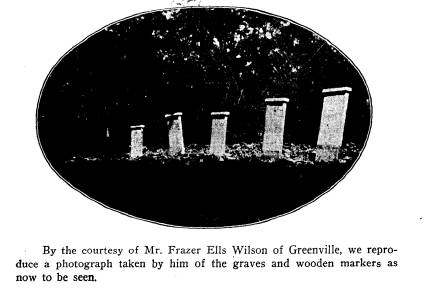Ohio History Journal
Editorialana. 161
mouth begin to move and approaching the
immobile features, silent for
centuries, he placed his ear to the
stone lips and heard a sound like a
subdued murmur "you're
another." As Artemus Ward would say of
this controversy of the critics "it
would be funny if it were not serious."
The Mound Builders builded better than
they knew. Their works are
food for thought and subjects for study.
Certain it is that they were a
vast and enterprising and interesting
race, whence and whither and why
we evidently have not learned.
Archaeological "history" is largely archaeo-
logical speculation, and with
speculation one man's guess is as good as
another's, unless it happens to be your
own and then of course it is a
good deal better than some one's else.
"But first I would remark, that it
is not a proper plan
For any scientific gent to whale his
fellow-man,
And, if a member don't agree with his
peculiar whim,
To lay for that same member for to 'put
a head' on him."
FORT ST. CLAIR.
In the first week in July it was the
privilege of the editor to be the
guest for a day of two of the Hon. C. R.
Gilmore of Eaton, the pretty
little county seat of Preble county. Mr.
Gilmore is the son of the late
Judge W. J. Gilmore who was for many
years a trustee of the Ohio State
Archaeological and Historical Society,
and one of its most active and
enthusiastic advocates and workers. He
was a devoted lover of historical
lore especially that pertaining to Ohio
and the Northwest. His grave
is located in the picturesque cemetery
of Eaton and commands a view
of the nearby hill upon which was
located the memorable Fort St. Clair.
This historic site and the surrounding
fields were the property of Judge
Gilmore, and at his death passed to the
possession of his son Clement R.
Gilmore.
Fort St. Clair was erected in the
tempestuous months of the Winter
of 1791-2. It was started December 15,
1791, and completed January
26, 1792. Gen. Wilkinson sent Major John
S. Gano, belonging to the
militia of the Territory, with a party
to build the fort. William Henry
Harrison then but an ensign, commanded a
guard every other night for
about three weeks, during the erection
of the fort. They had neither fire
nor covering of any kind and suffered
much from the winter cold. It
was a stockade of the usual kind, about
three hundred feet square and had
about twenty acres cleared around it.
The outline can yet be traced
in the contour of the field surface. It
was designed to be the midway
fortification between Fort Hamilton on
the south and Fort Jefferson on
Vol. XI.-11
